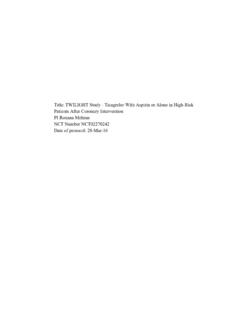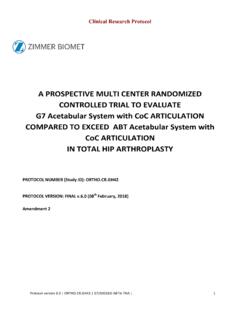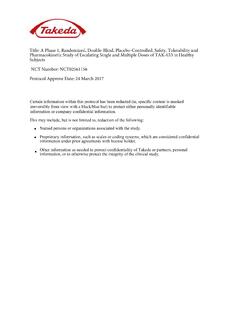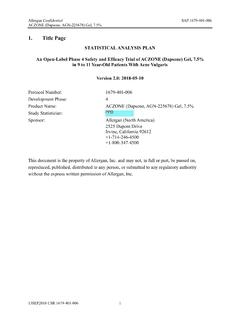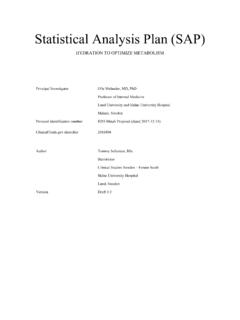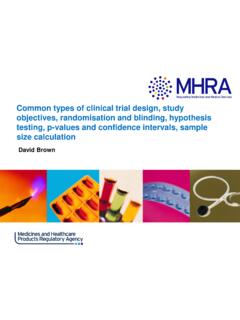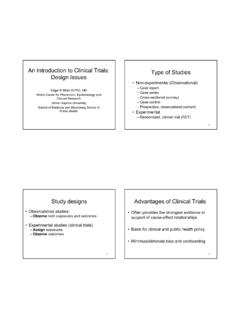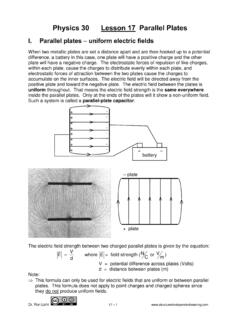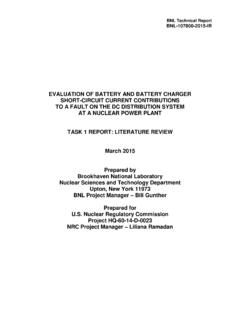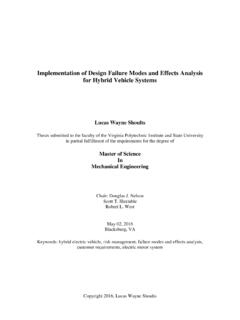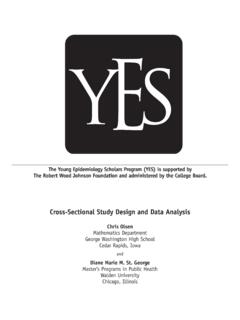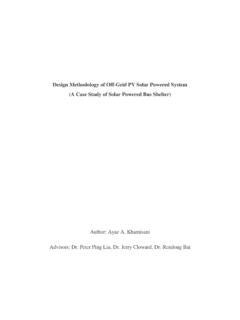Transcription of Novartis CSR template
1 Clinical DevelopmentQVJ499 CQVJ499A2404 / NCT03150160A 6- week, Double Masked, Placebo-Controlled study to Evaluate the Efficacy and Safety of Twice-daily Brinzolamide 1% / Brimonidine Fixed Dose Combination as an Adjunctive Therapy to Travoprost in Reducing Intraocular Pressure in Patients With Normal Tension GlaucomaDocument type:Abbreviated Clinical study Report Development phase:IV Property of NovartisConfidentialMay not be used, divulged, published or otherwise disclosedwithout the consent of NovartisTemplate version Jan 20, 20141 study informationStudy title: A 6-week, Double Masked, Placebo-Controlled study to Evaluate the Efficacy and Safety of Twice-daily Brinzolamide 1% / Brimonidine Fixed Dose Combination as an Adjunctive Therapy to Travoprost in Reducing Intraocular Pressure in Patients With Normal Tension Glaucoma Test drug/investigational product: Brinzolamide 1%/Brimonidine / QVJ499 Indication studied: Normal tension glaucoma study design : See study titleSponsor: NovartisProtocol identification: Protocol no.
2 CQVJ499A2404 Development phase of study : IVStudy initiation date: 21-Sep-2017 (first patient first visit)Early termination date: 09-Nov-2017 study completion date: 04-Dec-2017 (last patient last visit)Principal Investigator: Professor Company/Sponsor signatory: , , Novartis PharmaceuticalsCorporation, Statement: This study was conducted in compliance with Good Clinical Practice (GCP), including the archiving of essential documents. Report date(s): 09-Apr-2018(content final)Earlier reports from the same study : None2 Synopsis3 Table of contents1 study Table of of of List of abbreviations and definition of Independent ethics committee or institutional review conduct of the Patient information and consent ..96 Investigators and study administrative study objective and related objectives and related objectives and related Investigational of study design , including the choice of control groups.
3 And control the of study treatment and premature patient unmasking of treatment study exposure and and safety quality collection .. management and quality assurance and analysis .. disposition, demographics and other baseline ( study drug, rescue medication, other concomitant therapies, compliance).. of the primary of secondary efficacy of missing values/ size for analysis of key secondary in the conduct of the study or planned analyses .. changes in study in planned study of deviations ..2111 Efficacy sets of treatment results and tabulations of individual patient of and analytical of individual response dose, drug concentration and relationships to and drug-disease of efficacy Safety of Concomitant medication .. of adverse of adverse of adverse events by Deaths, other serious adverse events and other significant adverse laboratory signs, physical findings and other observations related to corrected visual acuity (BCVA).
4 Safety of safety Discussion and overall of tablesTable9-1 study medication formulation and batch 11-2 IOP measurements at each visit for patient ..22 Table 12-1 Vital signs measurements at each visit for patient ..25 Table 12-2 BCVA measurements at each visit for patient ..25 List of figuresFigure 9-1 study of abbreviations and definition of termsAEAdverse EventBCVABest Corrected Visual AcuityBIDbis in die (twice a day)CFBC hange from baselineCRFCase Report Form (paper or electronic)DSMDrug Supply ManagementEDCE lectronicData CaptureETDRSE arly Treatedof Diabetic Retinopathy StudyFASFull AnalysisSetGCPGood ClinicalPracticeICFI nformed Consent FormIECI ndependent Ethics CommitteeIOPI ntraocular PressureIRBI nstitutional Review BoardIRTI nteractive Response TechnologyMedDRAM edical Dictionary for Regulatory Activities OAGOpen Angle GlaucomaPGAP rostaglandin AnaloguePPSPer Protocol analysis setQDquaque die (once a day)
5 RDCR emote Data CaptureSAES erious Adverse EventSAPS tatistical Analysis PlanWHOW orld Health Organization ethics committee or institutional review boardThe study protocol and all amendments were reviewed by the Independent Ethics Committee (IEC) or Institutional Review Board (IRB) for each center, as listed in Appendix conduct of the studyThe study was conducted according to the ethical principles of the Declaration of information and consentInformed consent was obtained from each patient in writing at the screening study was described by the Investigator or designee, who answered any questions, and written information was also provided. Samples of the written information given to each patient and the consent form are presented in Appendix and study administrative structureThe administrative structure of the study , including internal and external participants, is described in Appendix list of Investigators, their affiliations and their qualifications, plus that of other important staff is provided in Appendix staff analyzed this study and authored this report.
6 The signatures of the Principal or Coordinating Investigator, the Sponsor s Responsible Medical Officer, and the report authors are provided in Appendix Glaucomais a group of progressive optic neuropathies, caused by the degeneration and death of retinal ganglion cells and the axons that form the optic nerve, which may lead to visual field deterioration if left untreated (Weinreb and Khaw 2004).Prostaglandinanalogues (PGAs) are often preferred as initial monotherapy because of their intraocular pressure (IOP) lowering efficacy, low frequency of systemic side effects, and lower frequency of instillation compared with older therapies such as beta-blockers (Nasserand Stewart 2006, Stewart et al 2005, Stewart et al 2008). One of the commonly used topical IOP lowering PGAs used to treat elevated IOP is travoprost. Travoprost solution is marketed by Novartis under trade names Travatan and TravatanZ.
7 Despitethe efficacy of the PGAs, a significant proportion of patients require more than one medication to reach target IOPs. Clinicians must often add medications or switch to more powerful fixed dose combination drops in order to reach target pressures and manage the disease, after initiation of a prostaglandin analogue (PGA).The fixed dose combination of brinzolamide 1% and brimonidine is marketed under the trade name Simbrinza . In two pivotal studies, Simbrinza, dosed twice daily (BID), has been shown to lower IOP ~ 27-38% from untreated baselines (Aung et al 2014, Gandolfi et al 2014). The mechanisms by which brinzolamide 1% and brimonidine lowers IOP differs from PGAs and thus Simbrinza may be a suitable adjunctive therapy for patients on a PGA that require further IOP lowering. Hence, the combination of PGA + Simbrinza should be evaluated to understand the IOP lowering effect purpose of this study was to determine the incremental IOP lowering that is achieved when Simbrinza, BID, is used adjunctively to Travatanin patients with normal tension glaucoma that may benefit from further IOP lowering.
8 Data from this study was intended for publications and to provide health care practitioners with important treatment guidance on the use of Simbrinza in this clinical study was prematurely terminated on 09-Nov-2017 due to administrative reasons, and not based on any safety or efficacy concerns (see further details in Section ). All participating sites were promptly notified to stop enrollment and to discontinue ongoing patients. 8 study objective and related endpointPrimary ObjectiveEndpoint for primary objectiveTo demonstrate that Simbrinzais superior to placebo in lowering diurnal IOP when added to baseline Travatan therapyChange from baseline (on Travatan) in diurnal IOP in the study eye at Week objectives and related endpointSecondary ObjectivesEndpoints for secondary objectivesTo evaluate the differences between Simbrinza and placebo in diurnal IOP percentage change from a Travatan baseline therapyPercentage IOP change from baseline (on Travatan)
9 In diurnal IOP at Week 6To evaluate the differences between Simbrinza and placebo in diurnal IOP, from a Travatan baseline therapyDiurnal IOP at Week 6To evaluate the differences between Simbrinza and placebo in IOP change at each time point, from a Travatan baseline therapyChange from baseline in IOP for each time point at Week 6To evaluate the differences between Simbrinza and placebo in IOP percentage change at each time point, from a Travatan baseline therapyPercentage change from baseline in IOP for each time point at Week objectives and related endpointsRefer to Appendix for exploratory objectives and related designFigure 9-1 study designBID: twice a day, QD: once a was a multicenter, randomized, double-masked, two-arm, placebo-controlled, parallel -group study in patients with normal tension glaucoma who were insufficiently controlled on travoprost (Travatan) monotherapy.
10 Approximately 200 patients were planned to be randomized and treated for up to 11 weeks, whilst they were to receive double-masked study medication for 6 study was divided into 2 sequential phases for a total of 5 visits: Phase I: a Screening/Eligibility phase Phase II: the Masked Treatment PhaseFor full details of study design refer to Appendix of study design , including the choice of control groupsNormal tension glaucoma patients are a difficult to manage sub-group of open angle glaucoma (OAG) patients that have lower baseline pressures than OAG patients with elevated IOP. This study was designed to investigate the incremental IOP lowering that is achieved when Visit 5(Day 42)Travatan(QD)Simbrinza(BID)Travatan(QD )Placebo (BID)Visit 4(Day 14)First DoseRandomizationLast DosePrimary EndpointVisit 3 Eligibility 2 Visit 2 Eligibility 13- 8 DaysTravatan(QD)Visit 1 Screening42 DaysUp to 29 DaysWashout/Run-inPhase I:Screening/EligibilityPhase II:Masked TreatmentSimbrinza is added to Travatan (a PGA) which is often used as initial therapy to lower IOP.
